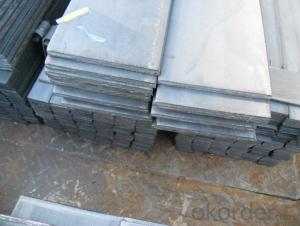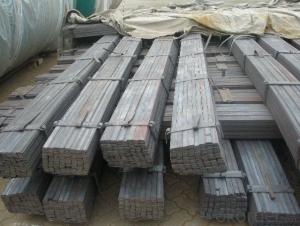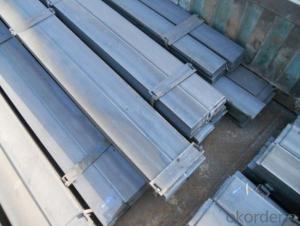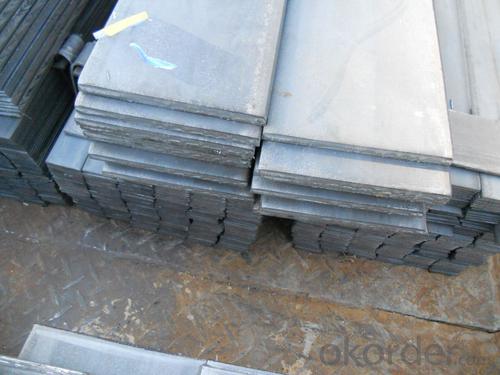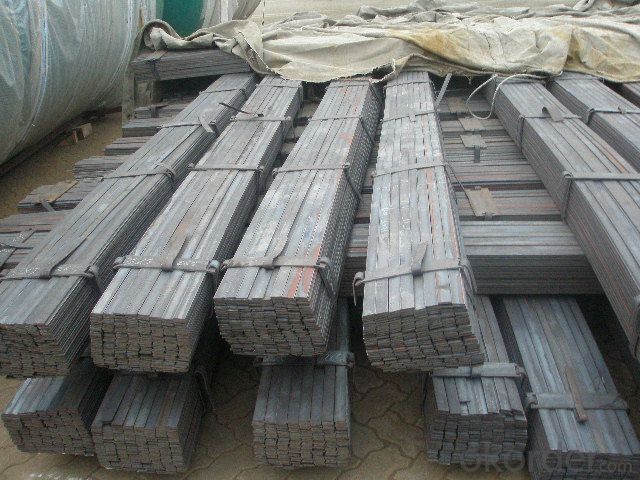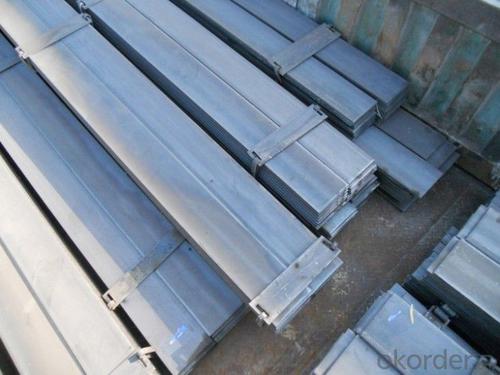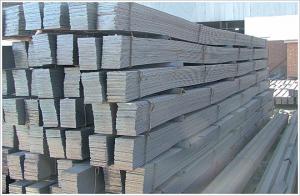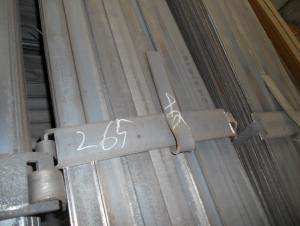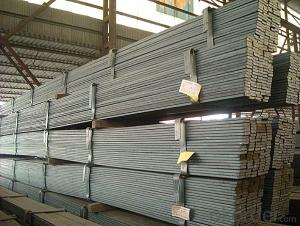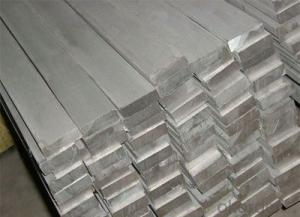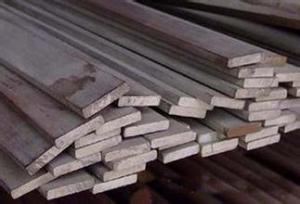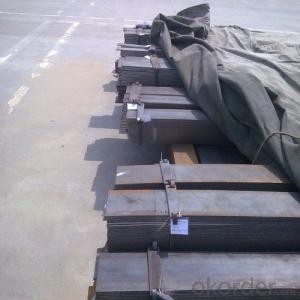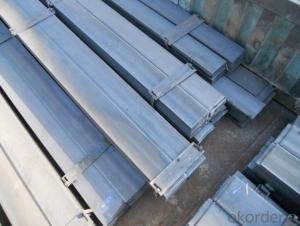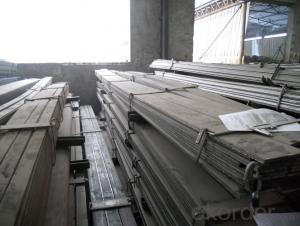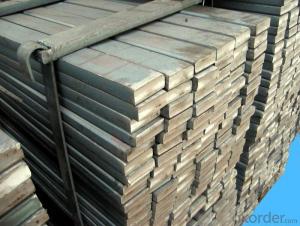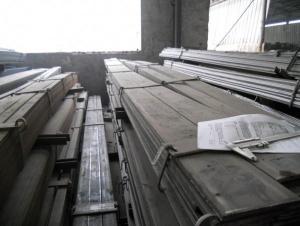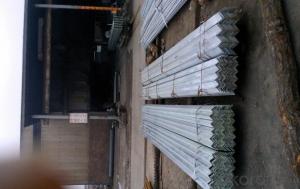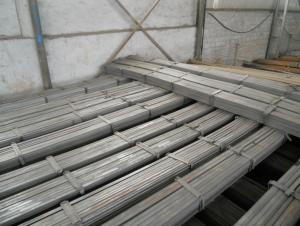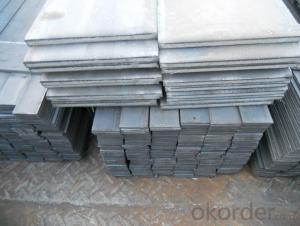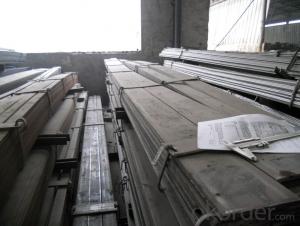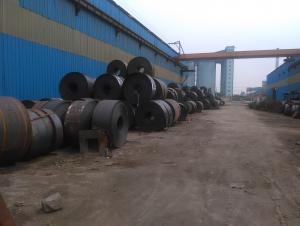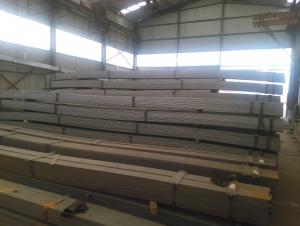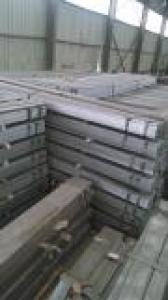Hot Rolled Steel Flat Bar with Good Price
- Loading Port:
- Tianjin
- Payment Terms:
- TT OR LC
- Min Order Qty:
- 25 m.t.
- Supply Capability:
- 10000 m.t./month
OKorder Service Pledge
OKorder Financial Service
You Might Also Like
Product Description:
OKorder is offering high quality Slit Cutting Flat Bar at great prices with worldwide shipping. Our supplier is a world-class manufacturer of steel, with our products utilized the world over. OKorder annually supplies products to European, North American and Asian markets. We provide quotations within 24 hours of receiving an inquiry and guarantee competitive prices.
Product Applications:
Slit Cutting Flat Bars are ideal for structural applications and are widely used in the construction of buildings and bridges, and the manufacturing, petrochemical, and transportation industries.
Product Advantages:
OKorder's Slit Cutting Flats Barare durable, strong, and resist corrosion.
Main Product Features:
· Premium quality
· Prompt delivery & seaworthy packing (30 days after receiving deposit)
· Corrosion resistance
· Can be recycled and reused
· Mill test certification
· Professional Service
· Competitive pricing
Product Specifications:
Manufacture: Slit Cutting
Grade: Q195 – 235
Certificates: ISO, SGS, BV, CIQ
Length: 6m – 12m, as per customer request
Packaging: Export packing, nude packing, bundled
Chemical composition of Q235
Alloy No | Grade | Element(%) | ||||
C
| Mn
| S
| P
| Si
| ||
Q235
|
B
|
0.12—0.20 |
0.3—0.7 |
≤0.045 |
≤0.045
|
≤0.3
|
Physical properties of Q235
Alloy No | Grade | Yielding strength point(Mpa) | Tensile strength (Mpa) | Elongation after fracture(%) | ||||||
Thickness (mm) | Thickness (mm) | |||||||||
≤16 | >16--40 | >40--60 | >60--100 | ≤16 | >16--40 | >40--60 | >60--100 | |||
≥ | ≥ | |||||||||
Q235 |
B |
235 |
225 |
215 |
205 |
375--500 |
26 |
25 |
24 |
23 |
FAQ:
Q1: How soon can we receive the product after purchase?
A1: Within three days of placing an order, we will begin production. The specific shipping date is dependent upon international and government factors, but is typically 7 to 10 workdays.
Q2: How do we guarantee the quality of our products?
A2: We have established an advanced quality control system which conducts strict quality tests at every step, from raw materials to the final products. At the same time, we provide extensive follow-up service assurances as required.
Q3: The products are invoicing on theoritical weight or actual weight?
A3: We can do it in both manners, it 's according to the customers' requirements.
Images:
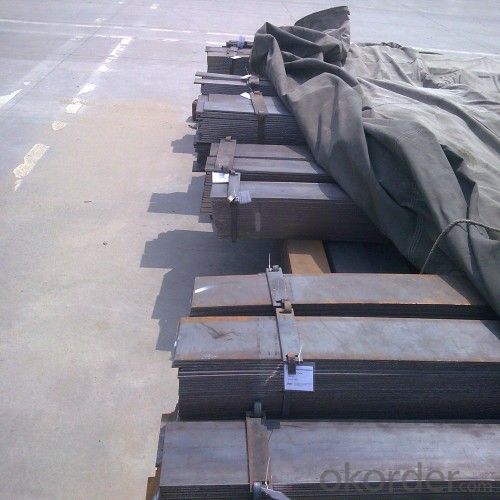
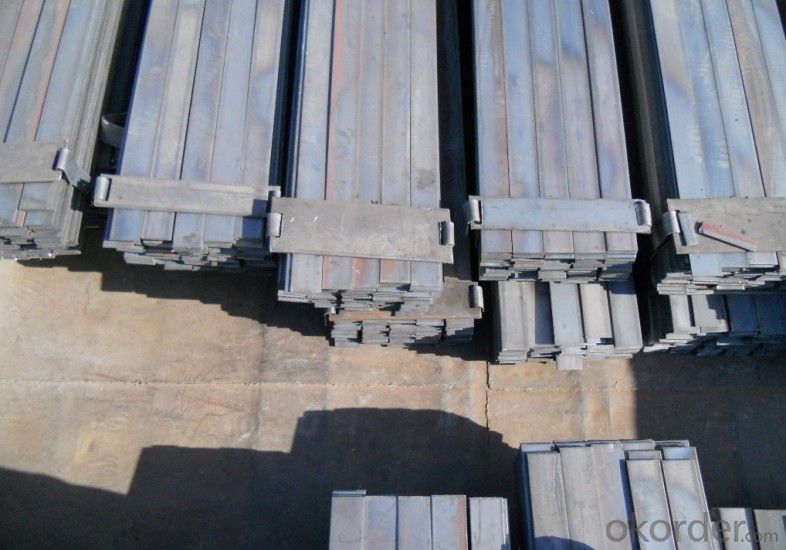
- Q: How do steel flat bars contribute to the overall safety of educational structures?
- The overall safety of educational structures is enhanced in multiple ways by the presence of steel flat bars. To begin with, steel flat bars are commonly employed in the construction of structural frames, supplying the necessary strength and stability to support the weight of the building. This guarantees that the educational structure remains structurally sound and able to withstand environmental forces like strong winds, earthquakes, and heavy snow loads. Moreover, steel flat bars are frequently used as reinforcement in concrete structures, such as beams and columns, increasing their load-bearing capacity and resistance to potential cracking or collapse. This reinforcement serves to prevent any structural failures that could jeopardize the safety of students, teachers, and other occupants. Additionally, steel flat bars possess a high degree of fire resistance, making them an excellent choice for educational structures. In the event of a fire, steel flat bars can endure high temperatures for an extended period, preserving the structural integrity of the building and allowing for safe evacuation. This fire resistance greatly reduces the risk of a catastrophic collapse and affords emergency responders valuable time to control the situation. Furthermore, steel flat bars are durable and long-lasting, minimizing the need for frequent maintenance or replacement. This ensures the ongoing safety of educational structures, as the structural components remain dependable and sturdy over time. In summary, steel flat bars are indispensable in promoting the overall safety of educational structures by providing strength, stability, fire resistance, and durability. Their use in construction contributes to the creation of secure and reliable buildings capable of withstanding various hazards, ultimately safeguarding the well-being of everyone within the educational environment.
- Q: Can steel flat bars be used for elevator shafts or doors?
- Yes, steel flat bars can be used for elevator shafts or doors. Steel flat bars are known for their strength, durability, and versatility, making them suitable for various structural applications such as elevator shafts or doors.
- Q: What are the different methods of surface embossing for steel flat bars?
- There are several different methods of surface embossing for steel flat bars. One common method is called roller embossing. This involves passing the flat bar between two rollers with a patterned surface. As the bar passes through the rollers, the pattern on the rollers is transferred onto the surface of the bar, creating an embossed pattern. Another method is called press embossing. In this process, the flat bar is placed between a patterned die and a matching counter die. Pressure is then applied to the dies, causing the pattern to be pressed into the surface of the bar. A third method is laser embossing. This involves using a laser beam to remove material from the surface of the bar in a patterned manner. The laser can be controlled to create a variety of different embossed patterns. Additionally, there is also the option of using chemical embossing. This method involves applying a chemical solution to the surface of the bar, which reacts with the metal to create an embossed pattern. Each of these methods has its own advantages and disadvantages, and the choice of method will depend on factors such as the desired pattern, the complexity of the design, and the cost and time constraints of the project.
- Q: What is the price range of steel flat bars?
- Several factors, such as the size, grade, and quality of the steel, can cause the price range of steel flat bars to vary. Typically, the price range for these bars is between $10 and $100 per bar. However, specialty or high-grade steel flat bars may be priced even higher, going up to $200 or beyond. To obtain the most accurate and current pricing information, it is advisable to consult local suppliers or refer to online sources.
- Q: Are steel flat bars suitable for making toolboxes?
- Yes, steel flat bars are suitable for making toolboxes. Steel is a strong and durable material, which makes it ideal for constructing toolboxes that can withstand heavy use and provide secure storage for tools. Additionally, steel flat bars can be easily shaped, welded, and reinforced to create a sturdy and reliable toolbox design.
- Q: How do steel flat bars perform in terms of electrical conductivity?
- Steel flat bars are not typically known for their high electrical conductivity. This is because steel is primarily composed of iron, which is a poor conductor of electricity. Compared to other metals such as copper or aluminum, steel has a lower electrical conductivity. However, steel can still conduct electricity to some extent, and its conductivity can be improved by adding certain alloying elements. If high electrical conductivity is a requirement, it is generally recommended to choose metals specifically designed for this purpose, such as copper or aluminum.
- Q: Can steel flat bars be used for manufacturing conveyor systems?
- Conveyor systems can indeed be manufactured using steel flat bars. These bars, renowned in the construction sector for their robustness, longevity, and adaptability, are frequently employed for this purpose. Their exceptional qualities render them suitable for a broad range of applications, including the production of conveyor systems. Within these systems, steel flat bars can serve as supports, frames, or guide rails, guaranteeing steadfastness and facilitating the seamless transportation of materials. Furthermore, steel exhibits remarkable resistance to corrosion, a particularly crucial attribute in environments where moisture or chemicals may come into contact with the conveyor system. In sum, steel flat bars represent a dependable and highly effective choice for the manufacture of conveyor systems.
- Q: How do steel flat bars contribute to the overall aesthetics of a project?
- Steel flat bars can contribute to the overall aesthetics of a project in several ways. Firstly, their sleek and minimalist design adds a touch of modernity and sophistication to any architectural or design concept. The clean lines and smooth surfaces of steel flat bars create a visually appealing and contemporary look. Moreover, steel flat bars offer versatility in terms of their applications. They can be used to enhance the design of various elements, such as furniture, railings, handrails, doors, and window frames. Their flexibility allows them to be easily shaped and customized to fit specific project requirements, offering endless possibilities for creative designs. Additionally, the durability and strength of steel flat bars make them an ideal choice for both indoor and outdoor projects. Their resistance to corrosion and weathering ensures that their aesthetics remain intact over time. This longevity contributes to the overall aesthetic appeal of a project, as it maintains the original design intent for years to come. Furthermore, steel flat bars can be finished in different ways to enhance their visual appeal. They can be polished, brushed, or powder-coated to add texture, shine, or color to the project. These finishes not only contribute to the aesthetics but also provide additional protection against wear and tear, further enhancing the overall visual impact. In summary, steel flat bars contribute to the overall aesthetics of a project by adding a modern and sophisticated touch, offering versatility in design applications, ensuring durability and longevity, and providing opportunities for various finishes. Their sleek appearance and ability to enhance the visual appeal of different elements make them a popular choice for architects, designers, and homeowners looking to create visually stunning and aesthetically pleasing spaces.
- Q: Can steel flat bars be used for manufacturing construction equipment?
- Yes, steel flat bars can be used for manufacturing construction equipment. Steel flat bars are versatile and strong, making them suitable for a wide range of applications, including in the construction industry. They can be used to fabricate various components of construction equipment, such as frames, supports, brackets, and reinforcements. Additionally, steel flat bars can withstand heavy loads, provide structural stability, and are resistant to corrosion, making them an ideal choice for manufacturing construction equipment that needs to withstand harsh working conditions.
- Q: Are steel flat bars commonly used in the construction of sports facilities?
- Steel flat bars are commonly employed in the construction of sports facilities. Their versatility and durability make them suitable for various applications in this field. Structural components like beams, columns, and frames are often made from steel flat bars. These bars are also used to build bleachers, grandstands, and other seating structures due to their strength and stability. Furthermore, they play a significant role in the assembly of equipment such as goal posts, fencing, and netting systems. Overall, steel flat bars are a favored option for constructing sports facilities because of their strength, versatility, and ability to withstand heavy loads and harsh weather conditions.
Send your message to us
Hot Rolled Steel Flat Bar with Good Price
- Loading Port:
- Tianjin
- Payment Terms:
- TT OR LC
- Min Order Qty:
- 25 m.t.
- Supply Capability:
- 10000 m.t./month
OKorder Service Pledge
OKorder Financial Service
Similar products
Hot products
Hot Searches
Related keywords
